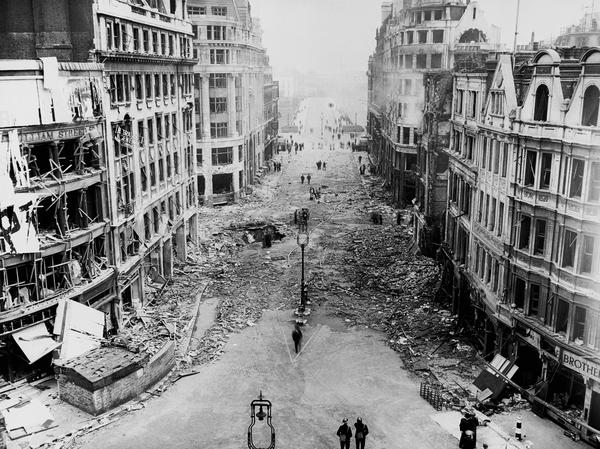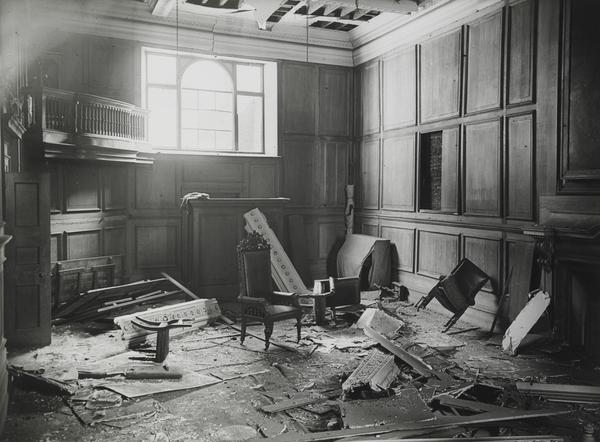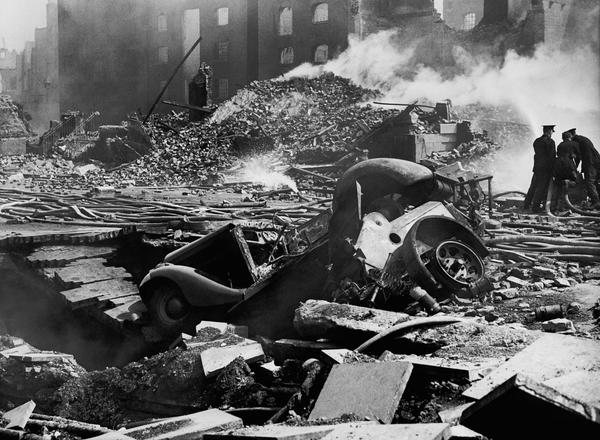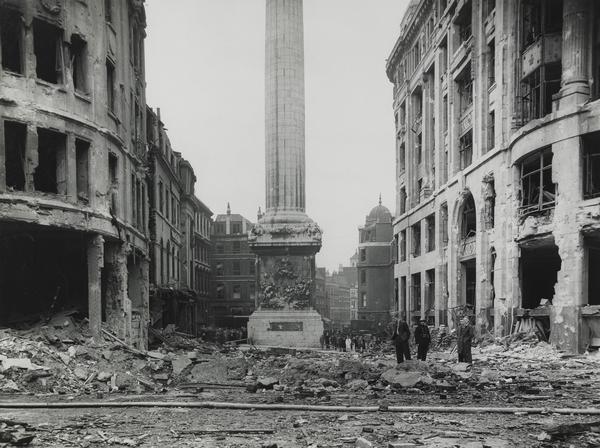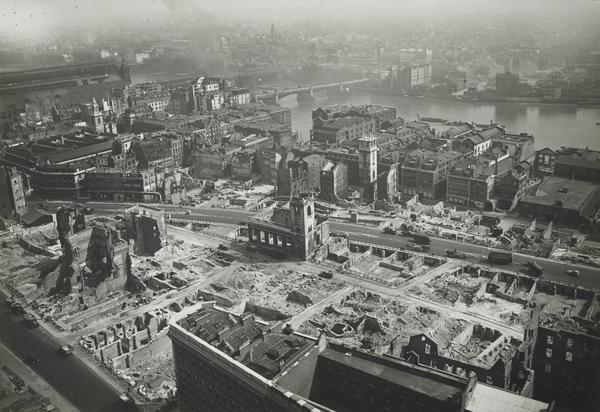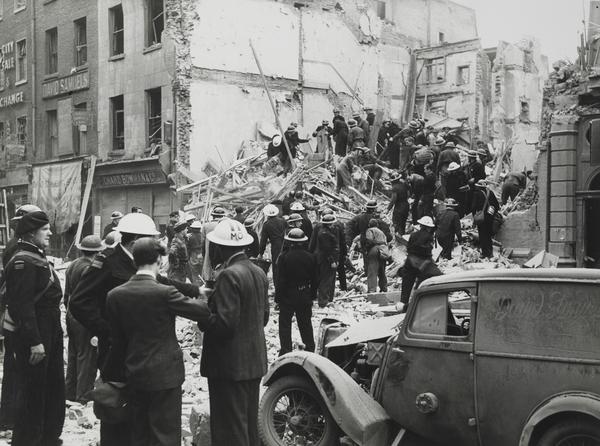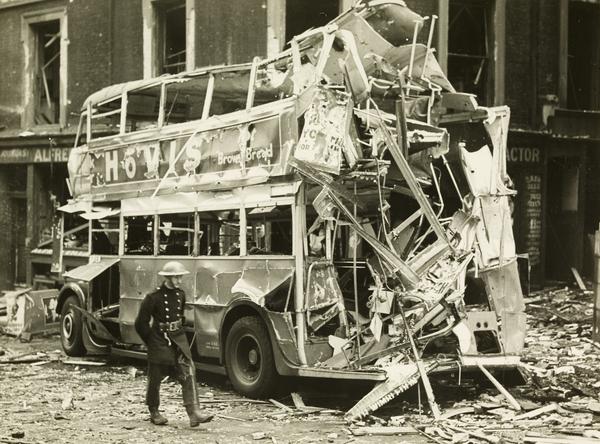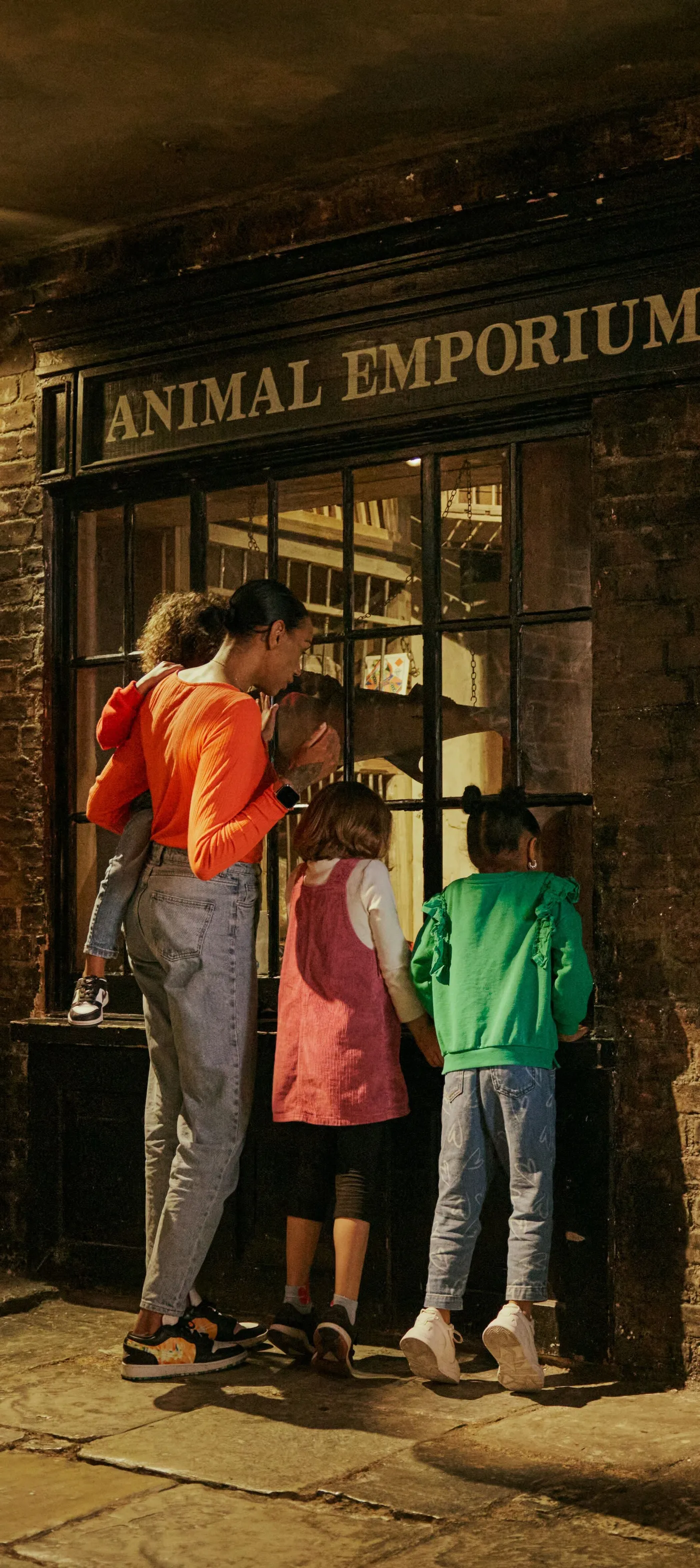Photos of bomb-shattered London in the Blitz
These photos were taken by two police officers assigned to record the effects of Nazi Germany’s air raids on the City of London during the Second World War (1939–1945). What we see is hard to process – dramatic destruction, played out on familiar streets.
City of London
September 1940 – March 1945

Cross and Tibbs
Arthur Cross and Fred Tibbs were City of London police officers. In July 1939, Cross was chosen as the official photographer to the department. A year later, Tibbs became his assistant. Their images in our collection cover the Blitz of 1940 to 1941, when the German air force used planes to bomb British cities. The photos also show a second period from 1944 to 1945, when London was targeted with V-1 and V-2 missile strikes.

A building collapses
Taken on 11 May 1941, this photo captures the moment a building collapses after a night of bombing. The building was 23 & 25 Queen Victoria Street, home to John Wood & Sons, Cigar & Tobacco Importers. The bombing raid on 10 May 1941 was the worst of the Blitz, and the last major attack. Nearly 1,500 people died.

The Bank Underground bomb
This photo was taken the morning after a bomb exploded in front of the Royal Exchange on the night of 10 January 1941. The bomb fell right through to the booking hall of Bank Underground station, leaving a massive crater. Fifty Londoners sheltering in the tunnels were killed. Within three weeks, the crater was cleared and spanned by a temporary steel bridge.

London buses
London Transport attempted to run ‘business as usual’ during the war. Many buses were damaged and routes were made impassable by craters and fallen debris. Some damaged buses, like the one pictured here on Arthur Street, were replaced by reinforcements sent from Scotland.

Red Sunday
These firefighters were photographed working on Newgate Street the morning after a bombing raid on Sunday 29 December 1940. Known as Red Sunday, it was among the worst raids. Almost all of the buildings on the south side of Newgate Street were destroyed.

A V-1 strikes
The Blitz ended in May 1941, when Nazi Germany paused attacks on Britain to focus on other targets. But in 1944 and 1945, an early cruise missile called the V-1 was used to target London again. The ‘V’ stood for Vergeltungswaffe, meaning 'retaliation weapon'. Its droning engine earned it the nicknames ‘doodlebug’ or ‘buzz bomb’. Before dropping, its engine frequently cut out – leaving a silence that spread fear and panic for those below.

Pulled from the rubble
This man is being rescued after a V-1 rocket hit 7 Budge Row on 19 July 1944. Over 2,000 V-1 rockets pounded London during the war. On 8 September 1944, the city was introduced to the V-2, a faster rocket which hit without warning. Hundreds struck London between September 1944 and March 1945.

The view from above
Tibbs and Cross took several photos from St Paul’s Cathedral. Looking down on the ruined city, it’s easier to appreciate how much damage was done. This photo is looking roughly north to Paternoster Square.

The Monument
Wreckage from a bombing raid on 9 September 1940 surrounds the Monument to the Great Fire of London, the disaster of 1666.
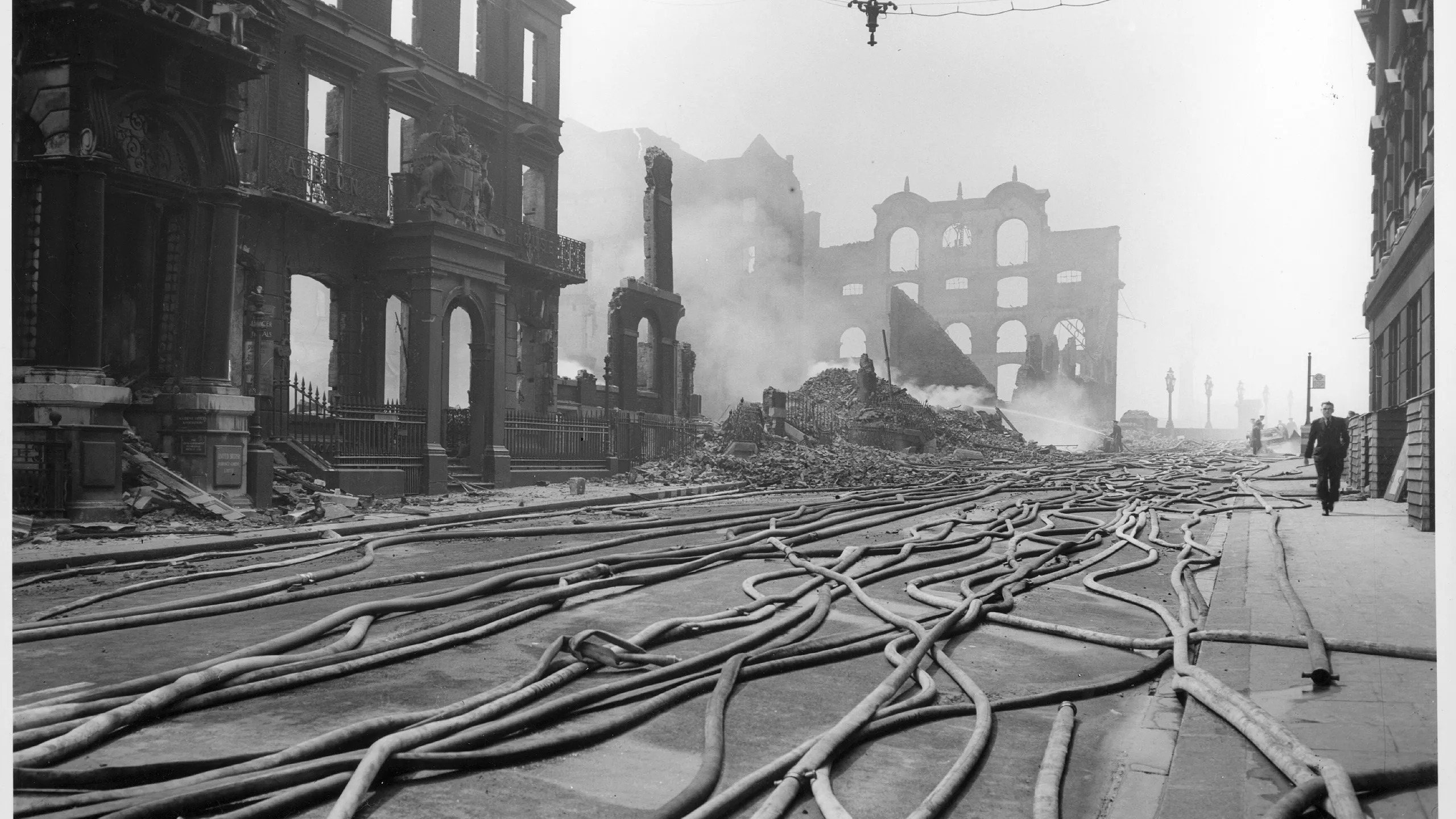
Fighting the fires
This tangle of hoses shows the scale of the firefighting effort at Queen’s Street Place on 11 May 1941, the morning after the heaviest raid of the Blitz. The photo looks towards Southwark Bridge.

The morning after
As some work to clear the rubble, others stop and look at the damage done. You can imagine the confusion, fear and shock at waking up and stepping out of your door, not knowing which buildings would be standing, and who would be left alive.

London Bridge
The view down King William Street, looking south towards London Bridge. It shows the damage to buildings caused by a high-explosive bomb and incendiary bombs dropped at 3.30am on 9 September 1940.


